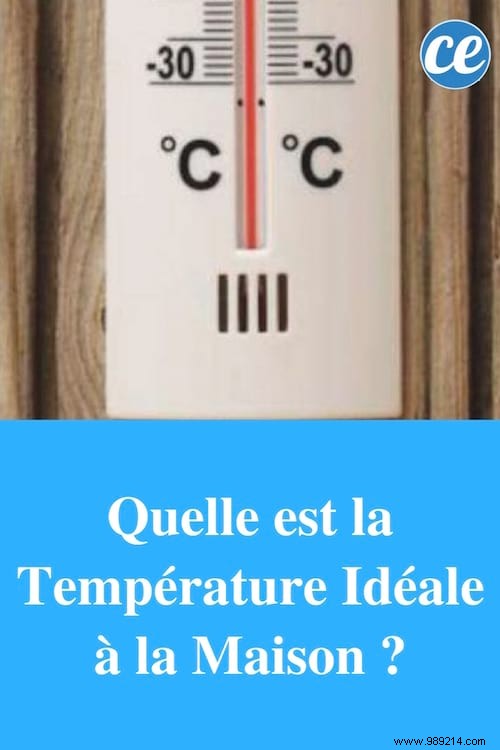
A good temperature at home is good health.
Not only does it save you heating , but in addition a house that is too hot will make you feel bad.
The ideal temperature is when it is neither too cold nor too hot, even in winter.
Wondering what the optimal temperature is? in your house, apartment or studio?
Take note of our tips for constantly maintaining the ideal temperature in your home.

If you're wondering how much to heat a house, the answer is...
It depends ! It all depends on whether we are talking about a living room, a bedroom.
Or it varies if we are talking about day or night temperature. Here are some details:
- The ideal room temperature at home is between a minimum of 17°C and a maximum of 19°C.
- For the bedroom: with 17°C, we are fine. It's the perfect temperature.
At night, some people, like me, prefer to turn the heating off completely when it's not too cold outside.
Indeed when you are under your duvet, heating is not an obligation. On the contrary, sleeping too warm is not good for your sleep.
Even in the baby's room , the temperature should not be too high. It should be between 18 and 20°C.
It is often considered that 19°C is the optimal temperature for its health.
- In the morning to start the day, you can put 19°C throughout the house, or only in the living area.
It is an economical temperature that does not impact your comfort.
- For the bathroom , 20°C is more than enough.
- If you're away from home during the day, set the temperature to 14°C .
If you are leaving for more than a day, put your heating on "frost protection".
Keeping to the recommended temperature to save money and be healthy is not always easy.
To keep the right temperature at home, the best solution is to use a thermostat (like this one) to easily adjust your heaters.
This small device allows you to know the temperature of a room without a thermometer.
This allows you to control the temperature of every room in your house or apartment.
To moderate any excess heat or cold, you can also attach thermostatic valves to each of your radiators. This allows you to individually adjust each room to the nearest degree.
These recommended temperatures are averages of course.
Nothing prevents you from turning up the heating a little on a very cold evening, and turning it down during the day in mid-season (in autumn for example).
But be aware that having precise control to the nearest degree is the best way to make real savings .
No more excessive temperatures and therefore goodbye to unnecessary expenses.
The initial investment you will need to make by purchasing thermostatic taps to control temperatures will pay for itself very quickly.
And as with any investment, everything that follows will only benefit and return to your portfolio instead of flying away like before!